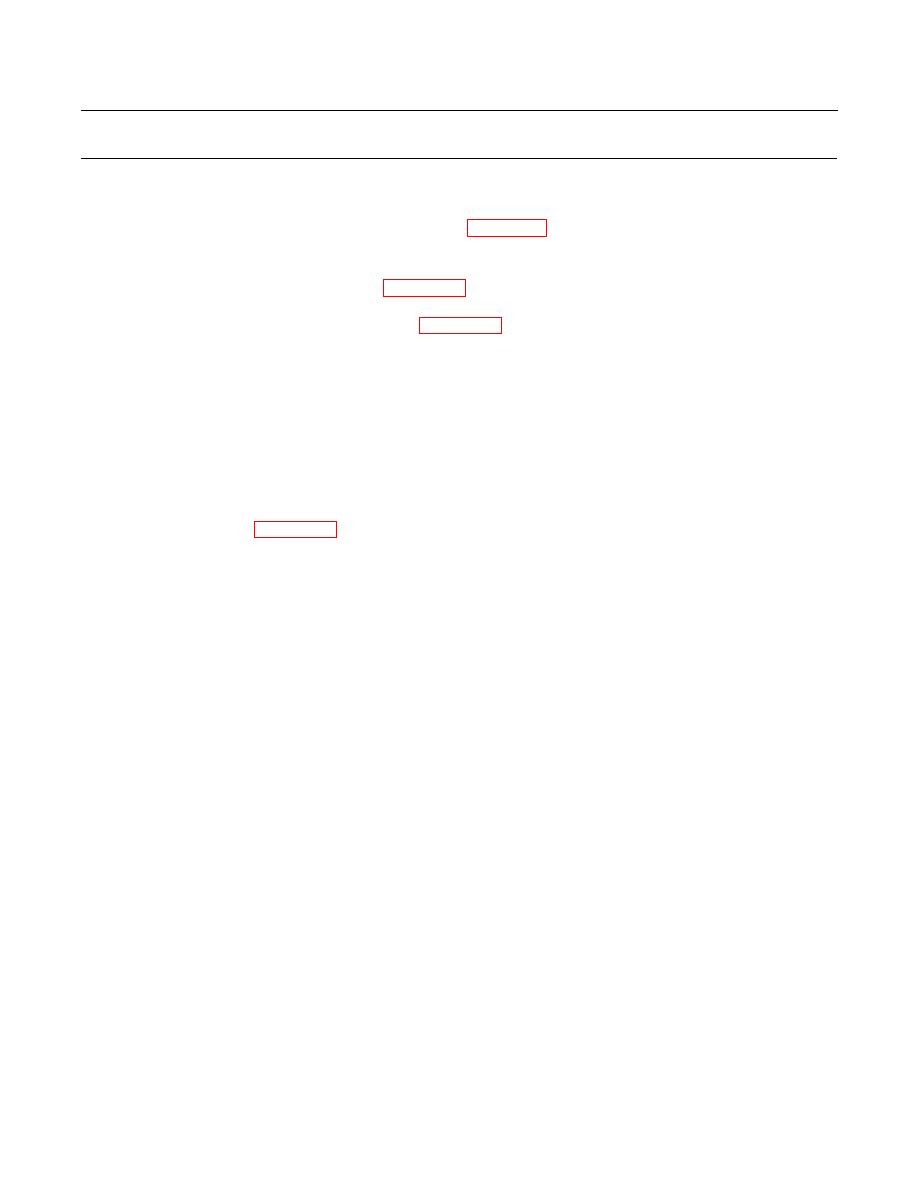 |
|||
|
|
|||
|
Page Title:
GENERAL PMCS PROCEDURES - CONTINUED |
|
||
| ||||||||||
|
|
 TM 5-2410-233-23
UNIT MAINTENANCE PREVENTIVE MAINTENANCE CHECKS
AND SERVICES (PMCS) INTRODUCTION - CONTINUED
0008 00
GENERAL PMCS PROCEDURES - CONTINUED
2.
Before performing preventive maintenance, read all the checks required for the applicable interval and prepare all tools
needed to make all checks. Have several clean rags (Item 28, WP 0184 00) handy. Perform ALL inspections at the appli-
cable interval.
a.
Keep It Clean. Dirt, grease, oil and debris get in the way and may cover up a serious problem. Clean as you work
and as needed. Use detergent (Item 10, WP 0184 00) and water when you clean.
b.
Rust and Corrosion. Check metal parts for rust and corrosion. If any bare metal or corrosion exists, clean and
apply a light coat of lubricating oil (Item 25, WP 0184 00). Report it to your supervisor.
c.
Bolts, Nuts and Screws. Check bolts, nuts and screws for obvious looseness, missing, bent or broken condition.
You can't try them all with a tool, but look for chipped paint, bare metal or rust around bolt heads. If you find one
you think is loose, tighten it.
d.
Welds. Look for loose or chipped paint, rust or gaps where parts are welded together. If you find a bad weld, report
it to your supervisor.
e.
Electric Wires and Connectors. Look for cracked or broken insulation, bare wires and loose or broken connec-
tors. Tighten loose connectors and ensure that the wires are in good condition.
f.
Hydraulic Hoses and Lines. Look for wear, damage, and signs of leaks. Ensure that clamps and fittings are tight.
Wet spots indicate leaks, but a stain around a fitting or connector can also mean a leak. If a leak comes from a
loose fitting or connector, tighten it. If something is broken or worn out, correct it if authorized by the Maintenance
Allocation Chart (WP 0183 00). If not authorized, notify your supervisor.
g.
Fluid Leakage. It is necessary for you to know how fluid leakage affects the status of your machine. The follow-
ing are definitions of the types/classes of leakage you need to know to be able to determine the status of your
machine. Learn and be familiar with them, and remember - when in doubt, notify your supervisor.
Leakage Definitions for PMCS
Class I
Seepage of fluid (as indicated by wetness or discoloration) not great enough to form drops.
Class II
Leakage of fluid great enough to form drops, but not enough to cause drops to drip from
item being checked/inspected.
Class III
Leakage of fluid great enough to form drops that fall from item being checked/inspected.
CAUTION
Operation is allowable with Class I and Class II leakage. WHEN IN DOUBT, NOTIFY YOUR SUPERVI-
SOR. When operating with Class I or Class II leaks, check fluid levels more frequently. Class III leaks must
be reported immediately to your supervisor. Failure to do this will result in damage to vehicle and/or com-
ponents.
0008 00-3
|
|
Privacy Statement - Press Release - Copyright Information. - Contact Us |